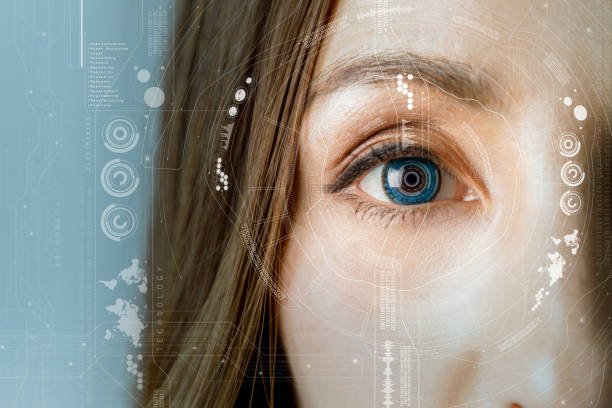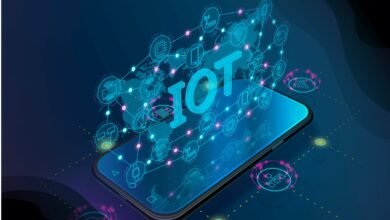Wearable Tech Essentials: Tips for a Successful IoT Wearable Project

In the fast-paced world of technology, wearable devices have become ubiquitous, seamlessly integrating into our daily lives. The convergence of Wearable Tech and the Internet of Things (IoT) has ushered in a new era of possibilities, providing users with innovative solutions that go beyond mere convenience. Whether you’re a tech enthusiast, a fitness buff, or a business professional, understanding the essentials of a successful IoT wearable project is paramount. This article delves into the intricacies of creating a cutting-edge wearable device, offering invaluable tips and insights to navigate the complex landscape of Wearable Tech.
Key Components of a Wearable IoT Project
Sensors and Actuators
The foundation of any wearable IoT project lies in the selection of accurate and efficient sensors and actuators that contribute to the device’s functionality.
Connectivity Options
Choosing the right connectivity options, such as Bluetooth or Wi-Fi, is crucial for ensuring real-time data exchange and remote control features.
Power Management
Efficient power management strategies are essential to address the challenge of limited battery life in wearables.
Planning Your Wearable Tech Project
Embarking on the journey of creating a groundbreaking Wearable Tech project requires meticulous planning to ensure a seamless and successful development process. The planning phase sets the foundation for the entire project, influencing design choices, functionality, and ultimately, the user experience. In this section, we’ll delve into the key aspects of planning your Wearable Tech project, guiding you through the steps to set objectives, understand your target audience, and identify the most valuable use cases.
Designing the User Experience (UX)
Intuitive Interface
Create an intuitive user interface that enhances the overall user experience, making the wearable easy and enjoyable to use.
Accessibility Features
Incorporate accessibility features to ensure your wearable is inclusive and user-friendly for people with diverse needs.
Customization Options
Allow users to customize their wearables, providing a personalized experience that suits individual preferences.
Hardware Considerations
Choosing the Right Materials
Select durable and high-quality materials for the construction of the wearable, considering factors like comfort, aesthetics, and longevity.
Form Factor and Comfort
The form factor of the device should balance aesthetics with comfort, encouraging users to wear it consistently.
Durability and Longevity
Design wearables with durability in mind, ensuring they withstand daily wear and tear while maintaining optimal performance.
Software Development for Wearables
Operating Systems for Wearables
Choose an appropriate operating system for your wearable device, considering factors like compatibility and developer support.
App Development and Integration
Develop user-friendly apps that seamlessly integrate with the wearable, providing additional functionalities and enhancing user engagement.
Security Measures
Implement robust security measures to protect user data and maintain user trust in the wearable’s capabilities.
Testing and Quality Assurance
Usability Testing
Conduct extensive usability testing to identify and address any user experience issues before the product launch.
Compatibility Testing
Ensure your wearable device is compatible with a variety of devices and operating systems for a broader user reach.
Addressing Potential Issues
Proactively identify and address potential issues during the testing phase to enhance the overall reliability of the wearable.
Launch and Marketing Strategy
Building Anticipation
Generate excitement by building anticipation through teasers, sneak peeks, and engaging promotional campaigns.
Collaborations and Partnerships
Explore collaborations and partnerships to expand the reach of your wearable, potentially reaching new customer segments.
Digital Marketing Techniques
Utilize digital marketing techniques, such as social media promotion and influencer partnerships, to create a buzz around your wearable.
User Feedback and Iterative Improvements
Importance of User Feedback
Encourage user feedback to understand how your wearable performs in real-world scenarios and gather insights for improvements.
Continuous Updates and Enhancements
Regularly release software updates and enhancements based on user feedback, ensuring your wearable evolves with user needs.
Staying Ahead in the Market
Stay informed about market trends and competitors to proactively adapt and stay ahead in the rapidly evolving wearable tech landscape.
Real-Life Examples of Successful Wearable IoT Projects
Fitness Trackers
Explore how fitness trackers have successfully combined sensor technology and IoT to help users monitor and improve their health and fitness.
Smartwatches
Examine the success stories of smartwatches, showcasing their versatility in providing notifications, fitness tracking, and seamless connectivity.
Healthcare Wearables
Learn from the impact of healthcare wearables, illustrating how they have revolutionized patient monitoring and wellness management.
Overcoming Challenges in Wearable IoT Projects
Battery Life Challenges
Discuss strategies to address the challenge of limited battery life, including energy-efficient components and smart power management.
Data Security Concerns
Highlight the importance of robust data security measures to protect user information and maintain user trust.
Interoperability Issues
Explore solutions for interoperability challenges, ensuring that wearables can seamlessly integrate with other devices and platforms.
Future Trends in Wearable Tech
Integration with AI and Machine Learning
In the dynamic landscape of Wearable Tech, the integration with Artificial Intelligence (AI) and Machine Learning (ML) stands out as a transformative force, pushing the boundaries of what wearables can achieve. This section explores the symbiotic relationship between Wearable Tech and AI/ML, delving into the potential benefits, real-world applications, and the exciting future that lies at the intersection of these two powerful technologies.
Unlocking New Capabilities
The integration of Wearable Tech with AI and Machine Learning unleashes a realm of new capabilities, transforming these devices from passive data collectors to intelligent companions. AI algorithms can analyze vast amounts of data generated by wearables, providing meaningful insights into user behavior, health patterns, and preferences. This not only enhances the user experience but also opens up opportunities for proactive health monitoring, personalized recommendations, and context-aware functionalities.
Enhanced Personalization
One of the key advantages of integrating AI and Machine Learning into wearables is the ability to deliver highly personalized experiences. These technologies can learn from user interactions, adapting to individual preferences and habits over time. Whether it’s predicting fitness goals, suggesting optimal productivity routines, or customizing user interfaces, the integration with AI/ML ensures that wearables become intuitive and tailored to the unique needs of each user.
Augmented Reality (AR) in Wearables
Explore the potential of augmented reality in wearables, opening up new possibilities for immersive and interactive experiences.
Sustainability and Eco-Friendly Wearables
Highlight the growing trend of sustainability in wearables, with manufacturers focusing on eco-friendly materials and energy-efficient designs.
Read More: Connecting the Dots: How to Create an IoT Ecosystem In 2024
Conclusion
In the realm of technology, the evolution of Wearable Tech has not only transformed the way we interact with devices but has also opened up avenues for innovative and personalized experiences. As we conclude our exploration of Wearable Tech Essentials for a Successful IoT Wearable Project, it’s evident that the marriage of wearable devices with the Internet of Things (IoT) has ushered in a new era of connectivity, accessibility, and user-centric design.In this journey, we’ve unraveled the intricacies of planning, design, hardware considerations, and software development, all crucial elements in the creation of a successful IoT wearable.
We emphasized the importance of user feedback, continuous improvements, and staying abreast of emerging trends to ensure wearables not only meet but exceed user expectations.As we look towards the future, the trajectory of Wearable Tech appears promising, with integration with AI, augmented reality, and a heightened focus on sustainability. Wearables are not just gadgets; they are companions that seamlessly integrate into our lives, providing insights, convenience, and a touch of innovation. As the landscape continues to evolve, the essence of a successful IoT wearable project lies in the delicate balance of technological prowess and a deep understanding of human needs. So, strap on your wearables and embrace the future, where technology meets the rhythm of everyday life.
FAQs : IoT Wearable Project
What is the significance of IoT in wearable technology?
IoT enhances connectivity, data exchange, and the ability to collect valuable insights for improved user experiences.
How can I address battery life challenges in wearable IoT projects?
Strategies include using energy-efficient components and implementing smart power management.
Why is user feedback crucial for the success of wearable tech projects?
User feedback helps understand real-world performance, allowing for continuous updates and improvements based on user needs.
What are some future trends in wearable technology?
Future trends include integration with AI and machine learning, augmented reality (AR), and a focus on sustainability.
How can wearables contribute to healthcare?
Wearables in healthcare revolutionize patient monitoring and wellness management, providing real-time data for healthcare professionals.










